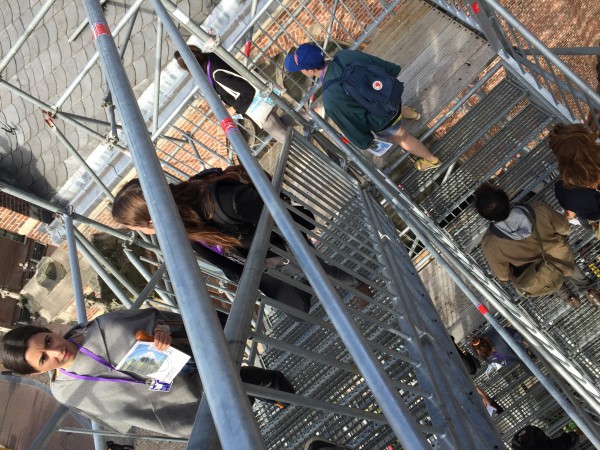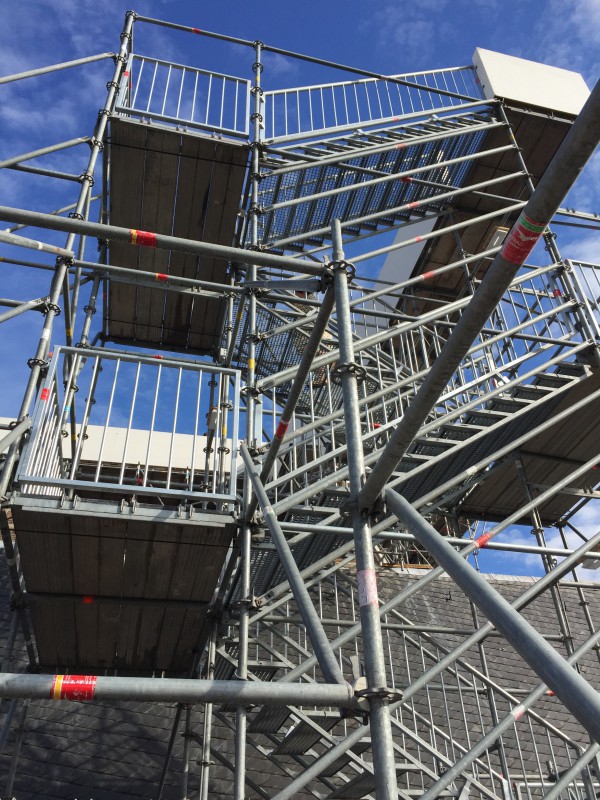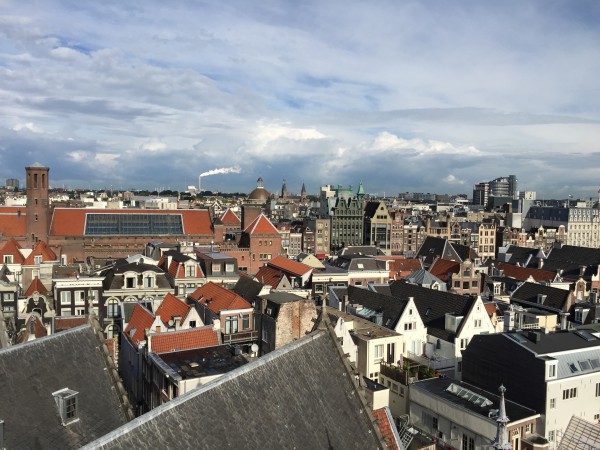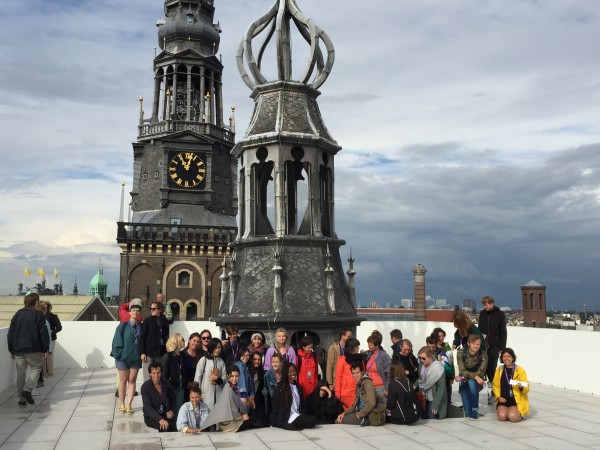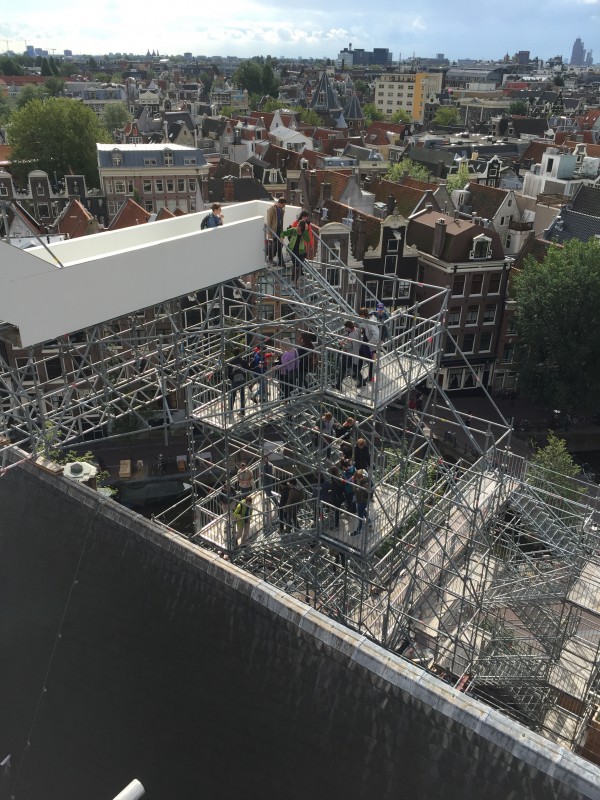the opening of the academic year at inter-architecture takes place “somewhat closer to heaven” than our own space at the Rietveld Academie, the old church (Oude Kerk) in the center of the city.


Taturo Atzu: the garden which is the nearest to god
Taturo Atzu (1960, Nagoya, Japan) is internationally renowned for his temporary art projects which transform our experiences of monuments, statues and architecture. Radically altering our perceptions, his installations provide public and intimate access to elements within our urban environment. Atzu’s first public project in the Netherlands centres around the historic weather vane and the small roof turret (with the Angelus Clock) of the Oude Kerk.
For centuries the roof and the clock tower have been a source of information for city residents. They indicated the time and weather, and sounded moments for prayer and church services. On most church towers the weather vane, indicating the direction of the wind, depicts a rooster. The weather vane on the Oude Kerk has a very unusual form, while the tower with the Angelus clock is barely noticed by passers-by. The Angelus clock was reinstalled in the roof turret for the 700th anniversary of the church and it is rung from behind the choir screen, something no one sees. Despite the church’s prominent, public location in the city the tower and weather vane are inconspicuous, visible only in miniature from a distance.
Atzu’s project links the monumental 13th century church, the oldest building in the city, to its recent incarnation as Amsterdam’s newest cultural institution. He gives the weather vane an update by re-imagining it in a fully furnished, modern living room. Interpreting contemporary Dutch interiors, the décor features a table, chairs, and above the sofa a classical print from the church collection. Atzu wandered the neighbourhood drawing inspiration from how Amsterdammers decorate their front windows and gardens. The Garden Which is the Nearest to God offers a unique perspective on a historical monument, its new context creating a surreal experience of cultural heritage. Taturo Atzu brings us closer to the experience of wonderment as we make our metaphoric journey on high – climbing the 156 steps to the 300m2 open space above – to a fictional living room and the built-in seating area around the clock tower.

